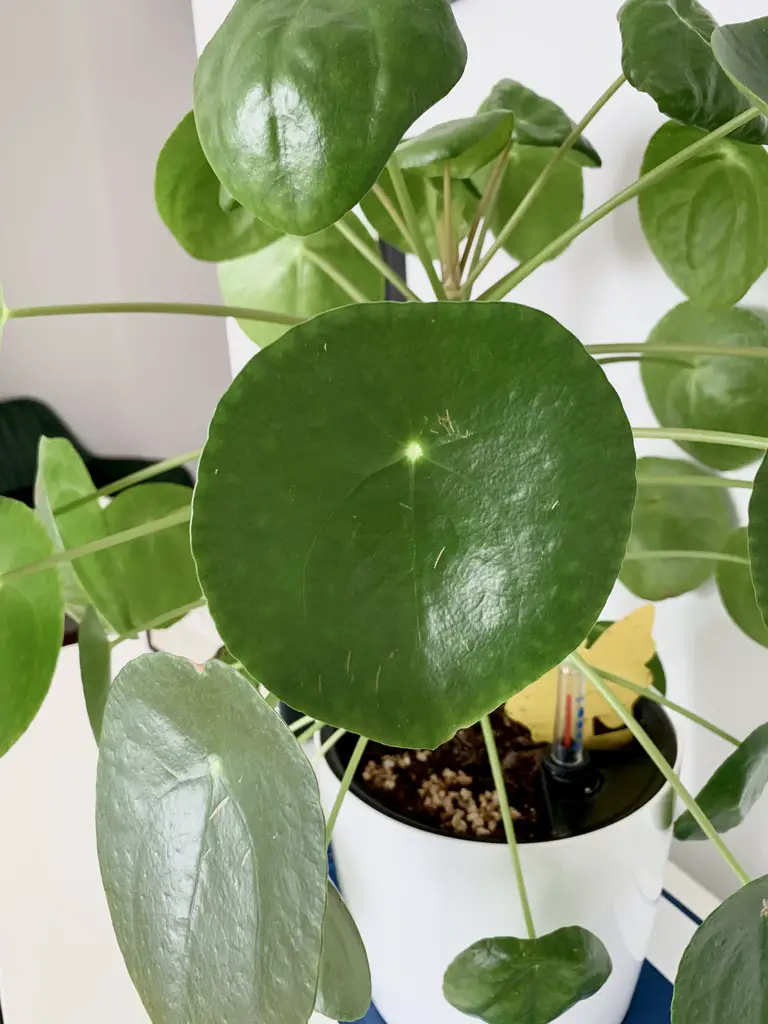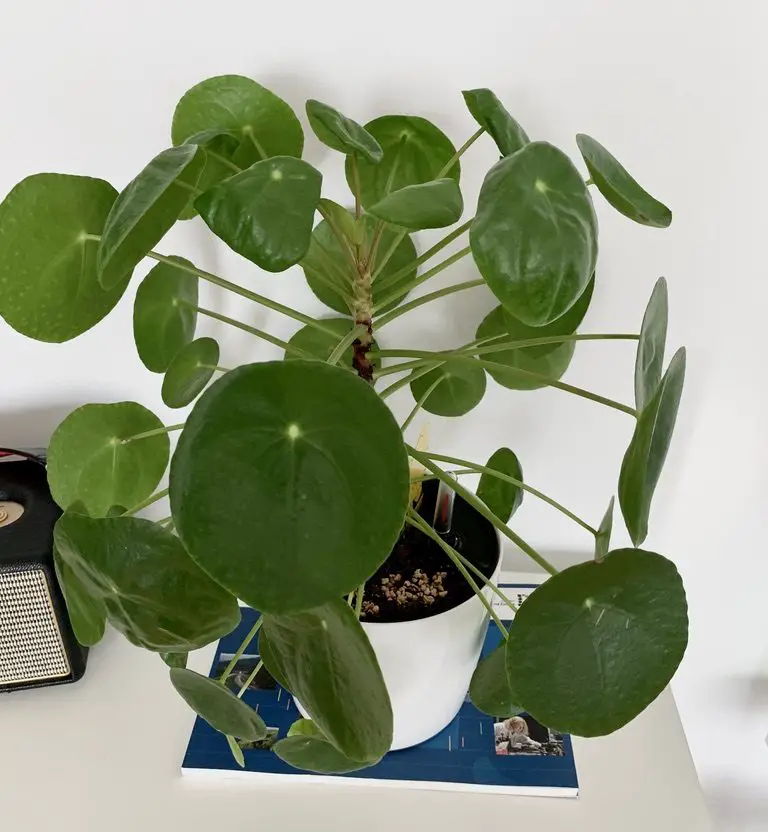
Pilea Peperomioides
Botanical Name: Pilea Peperomioides
Common Name: Chinese Money Plant, Friendship Plant, UFO Plant
Family: Urticaceae
About Pilea Peperomioides
The Chinese money plant is widely known for its fleshy coin-shaped leaves that form at the end of long green petioles, giving the plant a very piercing look. Adult plants tend to look like a bushy ball of green discs, hence where the nicknames Chinese money plant and UFO plant come from; those large round coin-shaped leaves.
Pilea Peperomioides is not only unique in its appearance, but also in that its natural habitat is a uniquely small area in southern China known as the Yunnan Province. It is a small area of southern China that borders Laos, Myanmar, and Vietnam. To date, the plant has only been found to grow naturally in this small region, though it is now grown outdoors in some neighboring countries with similar climates.

Light
Your Pilea Peperomioides will thrive in bright indirect light. It can even handle some early morning direct sun, meaning an east-facing window will provide the ideal lighting conditions. Other than some weaker early morning rays Pilea should be kept out of direct sunlight to avoid sunburned leaves.
These plants don’t do well in lower lighting conditions. Slow and leggy growth as well as a weak/leaning main stem are signs that your UFO plant may be getting too little light at its current spot.
Due to their fast growth pattern and tendency to reach for the sun, it is a good idea to rotate your Pilea frequently if you want to keep a straight stem and even growth on all sides. It is common for Pilea to have “bald” spots if they aren’t rotated frequently enough.
Water
Like most indoor plants it is best to allow the soil of the Pilea to dry almost completely between waterings. You will notice the petioles of your plant will look more droopy and become somewhat elastic when it is time to water. When you see the leaves drooping downward it is important to check the soil before watering as too much moisture can have similar symptoms.
Expect to water your Pilea more frequently if it’s in a bright spot or exposed to higher temperatures (about once a week). If your money plant has many offshoots from the mother plant it will also have higher water needs than a single plant. When it is winter time or your plant is in a shadier spot it may only need a deep watering every 14 days.
When considering Pilea Peperomioides water needs it is also important to provide the plant with the right kind of soil, choose a potting mix that is airy, and fast draining to avoid any chances of root rot or other issues caused by waterlogged soil.

Humidity & Temperature
Pilea is adaptable to a wide range of humidity levels and won’t fret about lower indoor humidity. As long as you can provide humidity levels at or above 35% your Pilea should be pretty happy. Due to the thick, fleshy nature of their foliage, they aren’t prone to browning leaf tips or other negative effects usually attributed to an environment lacking humidity.
The ideal temperature range for Peperomioides is between 60 and 80 degrees Fahrenheit. While they can handle temperatures considerably higher than this range (up to 95 degrees Fahrenheit in the proper shade), they can’t remain in an environment where temperatures will drop below 50 degrees. If your plant is kept outdoors for part of the year it’s vital to bring it indoors before temperatures drop below 50 degrees to avoid the foliage from dying back.
Toxicity
Pilea Peperomioides is considered non-toxic to cats, dogs, as well as humans.
While the plant is non-toxic to pets it may cause an upset stomach and vomiting if a considerable amount is ingested, similar to when a cat/dog eats grass.

Tips
Fertilize your Pilea Peperomioides on a bi-monthly basis during the growing season to keep up with the plants’ vigorous growth and to avoid lower leaves from dropping. A balanced 10-10-10 fertilizer is best, I’ve found diluting the solution slightly to avoid burning the plants’ foliage to be a good idea.
In terms of getting a full, bushy plant that stands upright I can only stress the importance of a well-lit spot and frequently rotating your Pilea. I try to rotate my Pilea a quarter about once a week to keep the stem growing upright and bushy.
Frequently asked questions
Why is my Pilea Peperomioides turning yellow?
The most common culprits for yellow and wilting leaves on Chinese Money Plants are overwatering and nutrient deficiencies. Firstly make sure your plants’ soil isn’t overly saturated with water, allow it to dry almost completely between waterings. If the watering doesn’t seem to be the issue give your plant a 10-10-10 balanced fertilizer that has been diluted slightly. Nutrient deficiencies are especially common if you have a fast-growing Pilea or have left it in the same pot and soil for longer periods of time (think a year or more).
Why is my Pilea Peperomioides drooping?
While it’s normal for the petiole to droop downward slightly due to the weight of the large round leaves, excessive drooping is a sign of other problems.
The most common reason for drooping leaves is underwatering, if you check the plants’ soil and it is bone-dry give it a deep watering to see if the issue resolves itself.
A more problematic cause for drooping leaves is overwatering, if your plant is drooping and the soil is moist to wet, let the soil completely dry out and see if it perks up. Other signs of overwatering are wilting leaves and a smell of rot near the soil.
If watering issues don’t seem to be the problem other causes may include: low lighting conditions, pests, or a lack of sufficient nutrients in its potting medium.
Why are the leaves on my Pilea Peperomioides curling?
If you notice the leaves of your Pilea curling outward, this is usually a sign of insufficient light. The plant will try to capture as much light as possible by creating a satellite shape, try to place your plant in a spot with brighter indirect light to avoid this kind of leaf curling.
If your Pileas leaves are curling inward towards the plant this is usually a sign of watering issues or a lack of proper nutrients in the plants’ soil. First check to make sure your plant isn’t underwatered, if the watering isn’t the issue give your Pilea a diluted fertilizer mix (ideally 10-10-10).